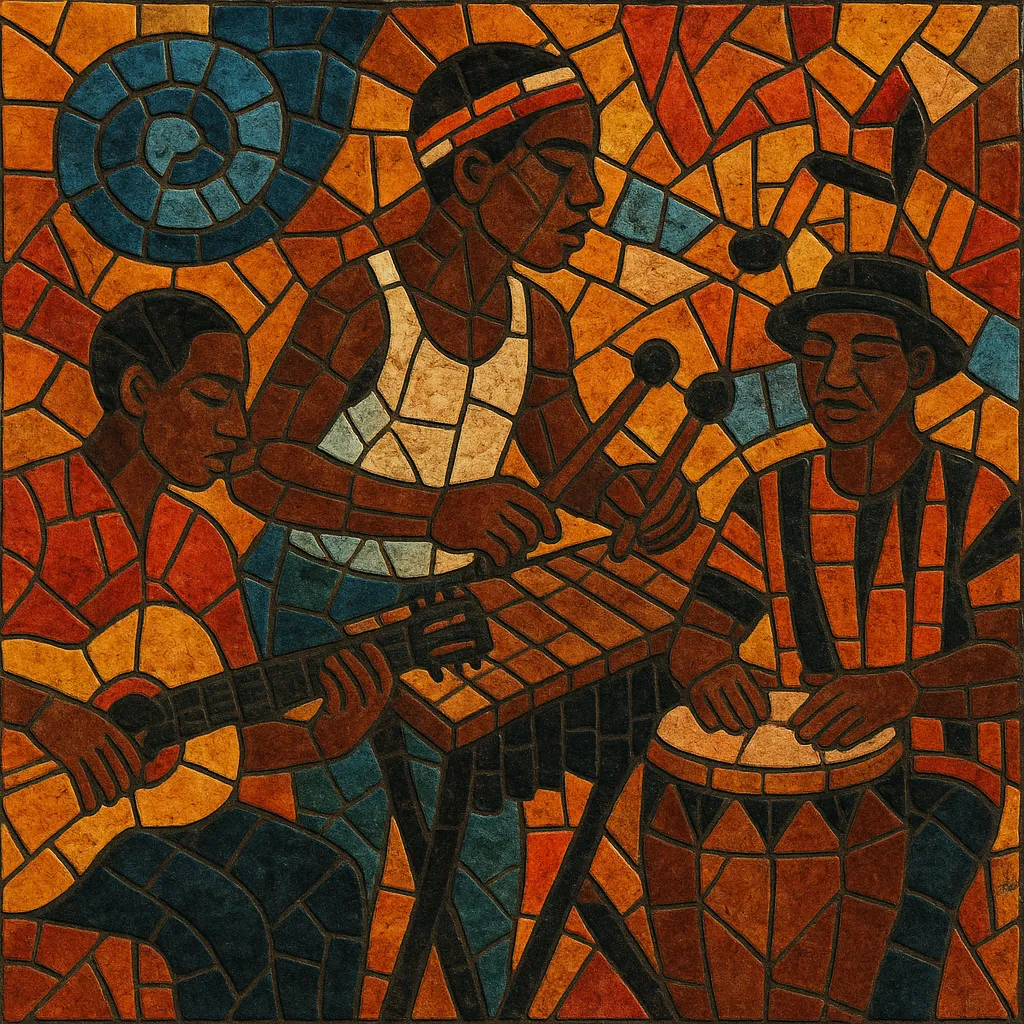
Mozambique (as a musical umbrella for the country’s styles) blends indigenous polyrhythms, Portuguese colonial dance forms, and urban dance‑band idioms into a distinctly East‑Southern African sound.
Core traditions include the virtuosic Chopi timbila (xylophone) orchestras of Inhambane, northern coastal tufo songs and dances associated with Muslim communities, and the urban guitar‑driven dance style marrabenta that crystallized in Maputo from the 1940s onward. Across the country, call‑and‑response vocals, dense hand‑clapping patterns, and interlocking percussion create propulsive grooves in 2/4 and 6/8, while Portuguese melodic turns and South African township influences shape harmonies and arranging.
Modern Mozambican pop fuses these roots with regional and global currents—soukous, kwaito, Afro‑house, and Congolese rumba—producing a dance‑forward, melodic sound that remains anchored in local languages and stories.
Indigenous musical life in the territory that is now Mozambique predates written history, with ritual drumming, call‑and‑response singing, and xylophone traditions central to social ceremonies. The Chopi timbila orchestras developed complex multi‑movement suites with interlocking parts and polyrhythms, a practice later recognized by UNESCO for its exceptional artistry.
From the late 19th to early 20th century, Portuguese colonial presence introduced European dance forms (polka, waltz) and melodic aesthetics (including fado’s lyricism), which blended with local rhythms. Migration and cultural exchange with neighboring South Africa also brought township guitar lines and band formats into Mozambican cities.
In the 1940s–50s, Maputo (then Lourenço Marques) musicians forged marrabenta—an upbeat, guitar‑driven dance style combining local rhythms with Portuguese and South African influences. Early recording and radio supported figures like Fany Pfumo and Dilon Djindji; later, bands such as Orchestra Marrabenta Star de Moçambique and singers like Wazimbo popularized the style.
After independence in 1975, state cultural initiatives promoted national identity through music, even as civil war strained cultural production. Groups like Ghorwane emerged with socially engaged lyrics, while northern traditions (tufo, Makonde mask dances) and central rituals continued to thrive, often showcased by national ensembles and radio.
Post‑war stability enabled new hybrids: pop, hip hop, and Afro‑dance forms incorporated marrabenta rhythms, timbila textures, and Congolese/South African grooves. Artists such as Stewart Sukuma, Mingas, and Eyuphuro reached international festivals. Urban scenes in Maputo and beyond embraced kwaito, soukous, and later Afro‑house, while preserving local languages and stories.
Contemporary Mozambican music is vibrant and dance‑oriented, with stars in pop and hip hop (e.g., Lizha James, Neyma) drawing on marrabenta and regional club sounds. Cross‑border currents with South Africa (e.g., tsonga/shangaan scenes) and Lusophone networks continue to shape production, while timbila orchestras and community tufo groups preserve and reinterpret deep traditions.

